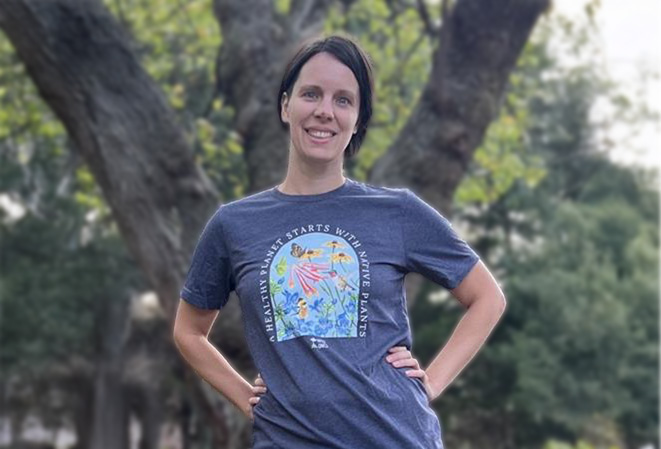Wild Ones is excited to announce a new partnership with Michigan Audubon, a like-minded organization dedicated to bird conservation through habitat restoration and education. With 13 Wild Ones chapters across Michigan, we see firsthand how native plants play a crucial role in supporting birds and other wildlife. By working together, we can amplify our shared mission and inspire more people to create thriving native landscapes.
A world without native plants is a world without birds.
Many in the birding community are likely familiar with the 2019 paper published in Science, which outlined how North American birds have seen a 30% decline in population since the 1970s. Unfortunately, the latest State of the Birds report published by the North American Bird Conservation Initiative (NABCI) has found that populations are continuing to decline. Birds such as two of Michigan Audubon’s focal species, the chimney swift and the purple martin, have both seen downward trends according to the 2019 State of the Birds report, with purple martins seeing a population decline of 25% and chimney swifts seeing 67% decline in their population. Unfortunately, things seem to be getting worse for the chimney swift, which has seen its status as a Yellow-Alert Tipping Point Species change to the worse Orange-Alert. This means that chimney swifts have seen accelerated declines in the past ten years. Shorebirds as a group continue to have population declines, with a 33% decline since the 1980s, and no species in that group have demonstrated an increase in population. Eastern forest birds have lost 21% of their populations since the 1970s, with 18 species decreasing and only six species increasing. Grassland birds continue to struggle and have some of the worst declines amongst the bird groups, decreasing by 43% since 1970.
As nice as it would be to be able to point to one thing that is causing these declines, it just isn’t possible. Whether it’s habitat loss, outdoor cats, collisions with windows, powerlines, turbines, or chemical toxins, they are all working synergistically to severely impact bird populations. However, out of all these risks to birds, one does stand out as the greatest cause of declines, and that is habitat loss. This may be habitat loss in their breeding or wintering habitat, or at their stopover sites during migration. But those aren’t the only spaces needed for habitat protection. Urban spaces are increasingly becoming more important for birds. If you live in a city, that large tree in your yard may be the only one for blocks or miles, and birds move through and live in cities! I’ll use my own yard as an example…While the neighborhood I live in has many trees, I am located in Lansing, about 10 minutes from downtown and 5 minutes from the highway. I keep a yard list on eBird and have recorded 42 species over the past year. Some of the exciting migrating birds that have come through have been: Nashville warbler, bay-breasted warbler, American redstart, and most recently, a pine warbler, my first warbler of 2025, appearing on April 6th. But these birds aren’t just passing through. In 2024, an American robin made its home in shrubs near my house and fledged four young, as did a northern cardinal. Now, in 2025, black-capped chickadees have started constructing their nest in a nest box alongside the house.
While birds do use our yards currently, it is likely that we are not doing enough in our yards for as many birds as we can. It’s estimated that there are at least 40 million acres of land locked up as unproductive lawn that has limited ecological use for birds. In addition to this amount of lawn, much of the typical suburban landscaping is made up of non-native, sometimes invasive plant species. So, we have to take action to preserve and enhance what we have left and create more habitat when we can. A lot can happen in our own backyards, and we can transform urban and suburban habitats by looking at native plants. For example, beginning in 2021, I took it upon myself to transform my parent’s front landscaping from an unfortunate site of Japanese Barberry (Berberis thunbergia) and Fountaingrass (Pennisetum alopecuroides) into a native plant bed of 20+ species.
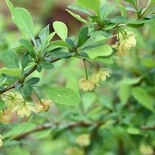
Japanese Barberry(Berberis thunbergii)
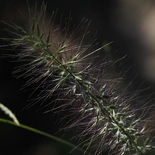
Chinese Fountaingrass(Pennisetum alopecuroides)
And why exactly do plants matter for birds? Well, just like for humans, plants provide sources of food.
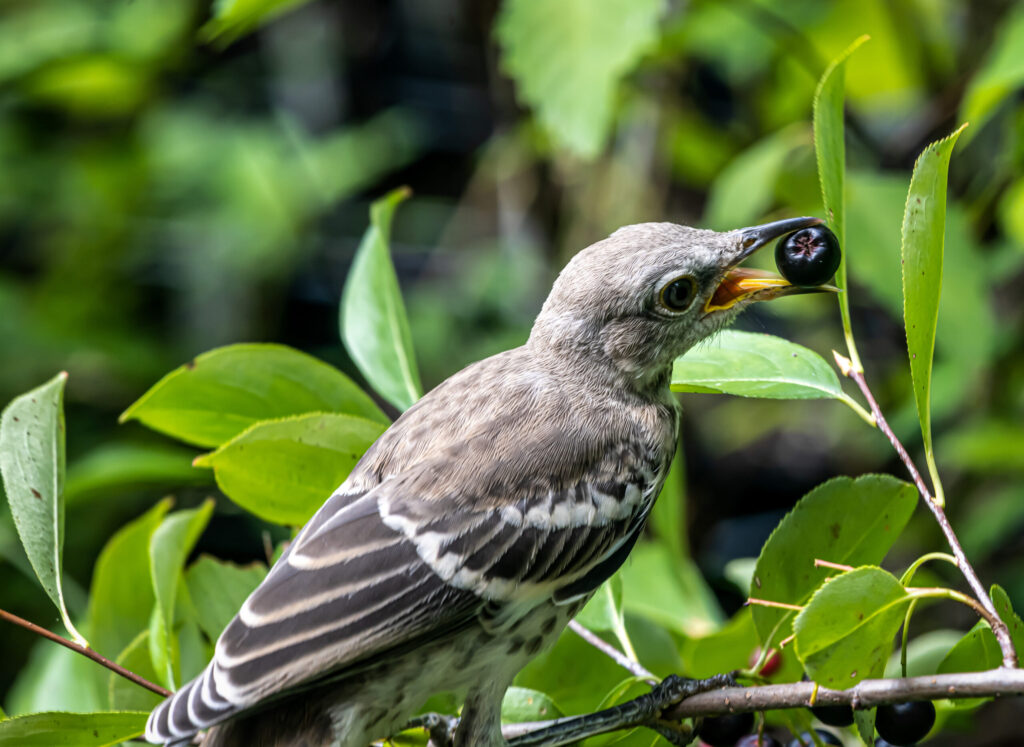
Plants provide food resources in the following ways: Berries, nectar, nuts, seeds, foliage, and indirectly through insects. We’ll start with the last item, perhaps the one so many have become familiar with thanks to the work of Doug Tallamy: insects. It’s estimated that 96% of North American songbirds feed their young insects, specifically caterpillars, which are very high in protein. That pair of chickadees in my yard that I’m hopeful will raise a full clutch of young will need upward of 9,000 caterpillars to raise its brood, which can be anywhere from 1-13 eggs. These birds aren’t finding the caterpillars they need to feed their young on any old plant, either. Trees such as ginkgo (Ginkgo biloba), a non-native ornamental tree, have only been found to support about five species of caterpillars in North America, whereas trees such as white oak (Quercus alba) can host over 500 species of caterpillars.
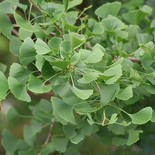
Maidenhair Tree(Ginkgo biloba)
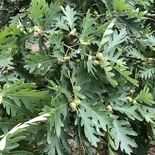
White Oak(Quercus alba)
But it’s not just about the trees we use! Even plants that we might gloss right over can provide food for caterpillars and, in turn, for birds. For example, wild strawberry (Fragaria virginiana) is a plant that can grow in many habitats and functions well as a groundcover. This species supports 23 species of caterpillars, which I think is pretty amazing. Now, are these 23 species of caterpillars that eat Wild Strawberry the same that consume white oak? There is probably some overlap there, but many caterpillars have restricted diets and are specific to certain plants or groups of plants. Let’s take a look at one of the 23 species that feeds on wild strawberry: the blackberry looper moth. Right now, we know that they eat the following groups of plants: brambles in the genus Rubus, (blackberries, raspberries, dewberries, etc.), we know they eat strawberries, and then they eat plants in the aster family, Asteraceae. That’s it. Granted, Asteraceae is one of the largest plant families on the globe, but still, think about your own garden…do you have any of the previously mentioned groups of plants that the blackberry looper moth caterpillar could eat? If not, that’s one less species of caterpillar that’s around for birds to feed to their young.
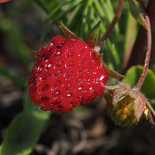
Virginia Strawberry(Fragaria virginiana)
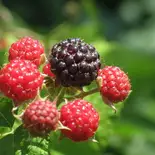
Blackberry(Rubus spp.)
While caterpillars are often noted as being important, other insects such as mosquitos, flies, wasps, and spiders often depend on plants as well either for nectar, foraging, or direct consumption and are important food sources for birds, especially aerial insectivores such as Chimney Swifts who can eat near 6,000 insects per day.
But plants during the growing season aren’t the only important part for insects. Dried, hollow stems of native forbs and grasses are often used for the larvae of insects to overwinter in. If these dead materials are cleaned up in the fall and composted or burned, you’ve eliminated a source of insects for the next year or even food through the winter for some birds like woodpeckers who will peck through stems to access larvae. This goes for leaves, too. Folks may be familiar with the push to leave your leaves; this is because insects are overwintering in that moist, insulated layer of leaves.
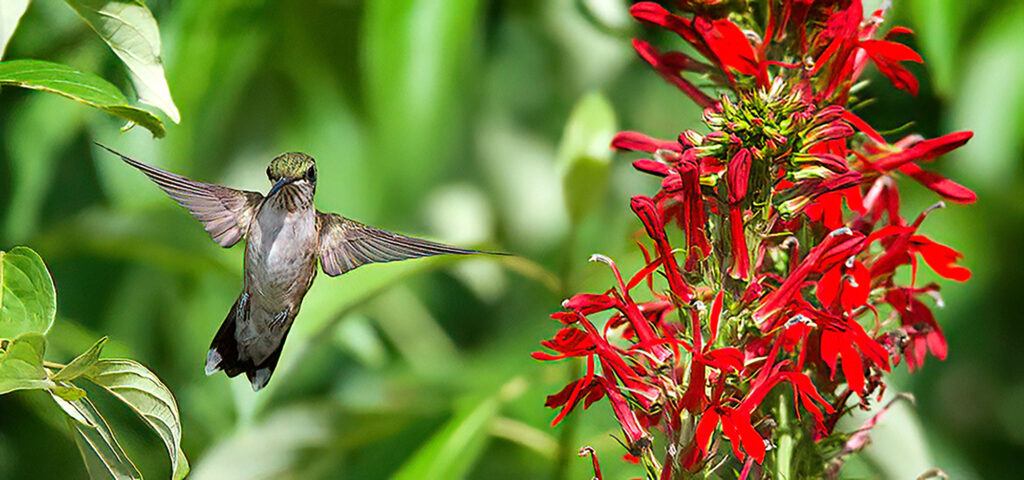
But it’s not all about the insects, right? Plants do provide food in other ways, more directly, for example, with nectar. In the Great Lakes region, the most well-known bird that directly consumes nectar is the ruby-throated hummingbird. Flowers that are preferred by Hummingbirds tend to have a tubular form or a nectar spur. This includes plants like wild columbine (Aquilegia canadensis), jewelweeds (Impatiens capensis or Impatiens pallida), and cardinal flower (Lobelia cardinalis), among others. These plants provide a great alternative to making sure you have your hummingbird feeder full of sugar water!
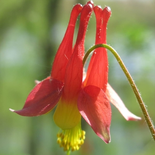
Red Columbine(Aquilegia canadensis)
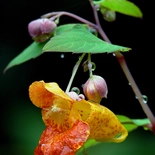
Jewelweed(Impatiens capensis)
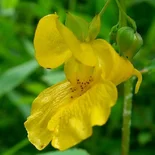
Pale Touch-Me-Not(Impatiens pallida)
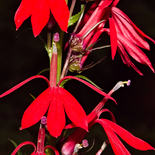
Cardinalflower(Lobelia cardinalis)
Berry-producing plants are incredibly important foods, especially to migrating birds. By providing a variety of berry-producing shrubs that provide berries throughout the season, you can attract birds to your yard year-round. These shrubs include many of the native dogwood species (Cornus sp.), spicebush (Lindera benzoin), sumacs (Rhus sp.), elderberries (Sambucus sp.), serviceberries (Amelanchier), and more. One berry-producing plant that many don’t think of as being a plant they may want in their yard or garden is pokeweed (Phytolacca americana). This plant is largely poisonous to humans, but the berries have high value to birds in the late summer and fall. Nineteen birds have been documented consuming pokeweed berries. I have personally seen: rose-breasted grosbeak, gray catbird, and American robin eating these. While this may not be a species of plant you want front and center in your garden, you may want to leave it if it’s in a section of the yard that may be less visible.
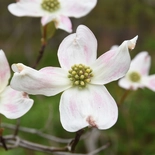
Dogwood(Cornus spp.)
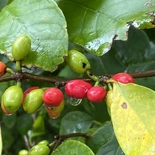
Northern Spicebush(Lindera benzoin)
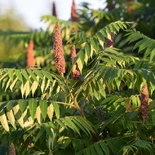
Sumac(Rhus spp.)
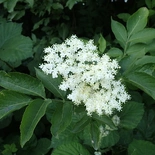
Elderberry(Sambucus spp.)
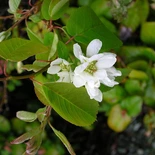
Serviceberry(Amelanchier spp.)
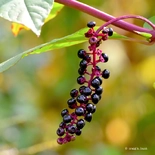
American Pokeweed(Phytolacca americana)
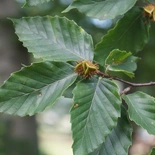
American Beech(Fagus grandifolia)
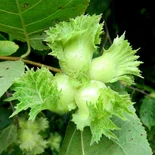
American Hazelnut(Corylus americana)
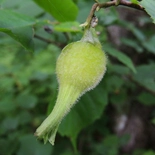
Beaked Hazelnut(Corylus cornuta)
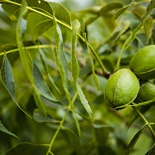
Hybrid Hickory(Carya spp.)
Back to oaks…we know that squirrels love acorns, but so do birds such as blue jays. Blue jays have been documented caching 3,000-5,000 acorns in one fall season. Acorns are not the only nut important for birds, however. Beechnuts from American beech (Fagus grandifolia), hazelnuts (Corylus americana and C. cornuta), and hickory (Carya sp.) nuts are all important food sources for birds, with 13 species of birds being documented consuming the nuts of these trees and shrubs.
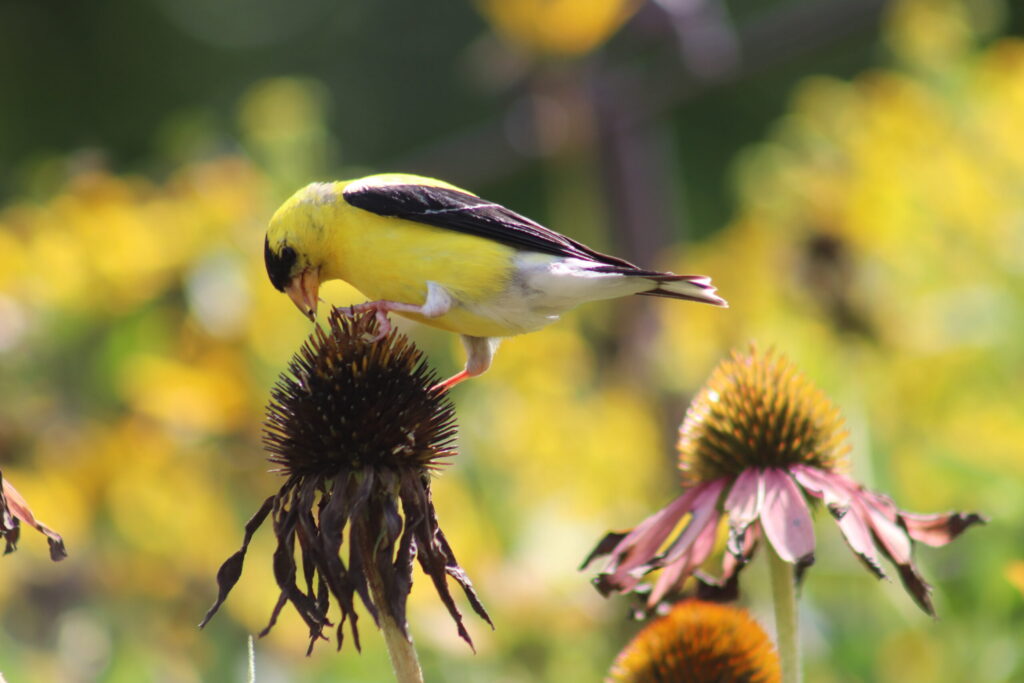
Smaller seeds are significant for birds, too. Many people are familiar with the image of a goldfinch on purple coneflower or a sunflower pecking at seeds, demonstrating that flowers in the Aster family can be important, but Asters aren’t the only group of plants with important seeds. The graminoids (grasses, sedges, and rushes) can be important seed sources for birds as well. Prairie dropseed (Sporobolus heterolepis) produces seeds that get eaten during the winter by field sparrows, savannah sparrows, tree sparrows, and juncos. Mace sedge (Carex grayii), a sedge of wet woodlands, produces inflated fruits that float in water, making them great fodder for dabbling ducks.
Then there are the bulrushes (Schoenoplectus sp. and Scirpus sp.). There are 30 species of birds that have been found to eat the seeds of this group of plants. Thirty! This is something that ducks may be dabbling at when you see them in the water and what other waterbirds such as rails may be pecking at along shores and mudflats. Now, some species in these genera may not be appropriate for planting in the garden right in front of your house, but if you have a small pond in your yard or an open wet area of your yard, these species will fit right in and provide food for a multitude of birds.
Plants are the foundation of the ecosystem. They’re the only organisms that can capture the sun’s energy and turn it into food for animals. Without native plants to produce food for insects or for the direct consumption by birds, we lose a major link in the food chain. A world without native plants is a world without birds. Focusing efforts on creating habitats in our urban and suburban areas using native plants can help hold off the decline we are seeing among so many of our native birds.
Chad Machinski, MS, is Conservation Manager for Michigan Audubon.

